Top 10 best classical piano sonatas ever
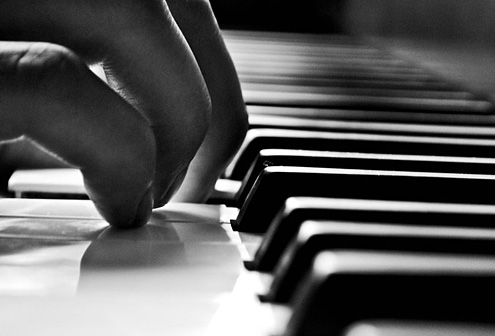
Piano is hands down the greatest instrument ever made. Even better than drums. And as far as genres go, classical is, without a doubt, the most timeless music ever.
What happens when you combine the two in their most essential forms? You get this: The best classical piano sonatas ever written.
Before I move on, please note: I use the term “sonata” a bit loosely — my list includes some pieces with no additional movements. But I am using the term “classical” strictly — anything from the common practice period of 1600-1910, spanning baroque, classical, and romantic periods.
So put on your powdered wig. Dress in a frilly shirt. And don’t applaud during the pauses, please. It’s the top 10 best classical piano sonatas of all-time.
10. Bach: Prelude No.1 in C Major
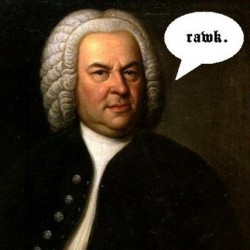 Origin: German
Origin: German
Here’s a little tip: If you ever want to avoid getting into trouble when asked who your favorite classical composer is, just say Bach. People will indelibly nod and say, “Ah, yes. Good choice.” No one would argue against that.
But I digress. Prelude No. 1 is on this list not because who it is written by, but for what it is: A relaxing and fitting primer to the following nine “hits” on my list.
It may not be Bach’s best work, and it’s certainly not the most riveting sonata. But it is, as the British would say, most agreeable.
9. Brahms: Waltz No. 15 in A-Flat Major
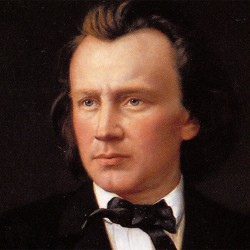 Origin: German
Origin: German
Short and sweet. That’s the best way to describe Brahms’ most famous piano waltz.
It’s light on its feet. Bouncy. Yet elegant.
The only downside: It’s so good, I would have preferred multiple variations.
Either way, take special note of the finale changes after the first minute. Most. Delicate. Ending. Ever.
8. Scott Joplin: The Entertainer
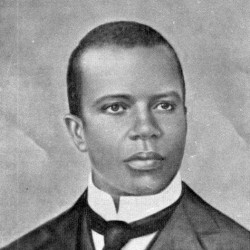 Origin: American
Origin: American
Snooty Euros and overeducated Americans may not consider Joplin a classical composer. But the hoi polloi do!
(Joplin was classically trained, considers his ragtime “classical music in miniature form,” was labeled a “classical phenomenon,” and his work is largely sold in classical sections. Take that, aristocrats!)
Back to the song at hand, I once heard a rumor that the piece is so popular in music heaven, that Beethoven, Mozart, and Bach practically fall over themselves trying to get closer to the upright piano at the Celestial Saloon, begging Joplin to play it “one more time.”
“Show-pan” may be the king of romantic period pieces. But there’s nothing more romantic than The Entertainer. It’s sophisticated yet accessible — the most playful song on my list.
7. Beethoven: Sonata No. 8: Second Movement
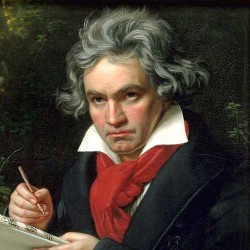 Origin: German
Origin: German
My second favorite Beethoven sonata ever, the second movement of Sonata no. 8 is great because it takes on so many different moods. At the same time, it never fails to return the listener to the soothing refrain.
You always know where the song is going and how to follow it. But it still surprises around a corner here and there.
Overall, the piece is powerful without being overbearing. Intricate without being exhausting. In other words, classic Beethoven.
6. Mozart: Sonata No. 11, sans menuetto
 Origin: Austrian
Origin: Austrian
It’s always been hard for me to enjoy complete classical compositions. In modern times, it’s also pretentious. After all, most of these pieces are long and were never intended to be played in the background or situational, as music often is today.
That said, almost all of Mozart’s Piano Sonata No. 11 is magnificent. I say almost because I find the penultimate movement, Menuetto, to be a bit boring (and thus have left it out). But the rest—from theme to variations I-VI and the block-rocking Turkish March ending (the one you know and love)—will make you feel like royalty.
Royalty, I say!
(Disclosure: Mozart is my favorite composer.)
5. Chopin: Nocturnes No. 2 in E-Flat Major
 Origin: Polish
Origin: Polish
This is a great song for film directors looking to close out a retrospective ending.
It’s also Chopin’s masterpiece—the only song of his to make my list.
I suspect Chopin fans will deride me for not including more of his works since he’s admittedly an innovator of piano sonatas. But truth be told, much of Chopin’s work is busy, flashy, and—quite frankly— obnoxious for being all over the place.
Nocturnes isn’t.
It’s relative. Exquisite. Captivating. I adore it.
4. Beethoven: Moonlight Sonata
 Origin: German
Origin: German
For over a century, millions of art students have asked their professors what Auguste Rodin’s The Thinker was listening to while, um… thinking.
Turns out, it was Beethoven’s Sonata No. 14 in C-Sharp Minor for Piano, more commonly called Moonlight Sonata.
Seriously, there has never been a more thought-inducing or self-reflecting song. Some say it’s sad, which it would be if your mind is dominated with depressing thoughts. But I find it dramatic. Every time I hear it, it makes me pause. It’s downright enchanting, almost hypnotic. Like a condensed 19th century version of Pink Floyd’s Dark Side of the Moon.
For that, I dub Moonlight the greatest Beethoven sonata ever—no easy feat since there are so many.
3. Erik Satie: Gymnopédie No. 1
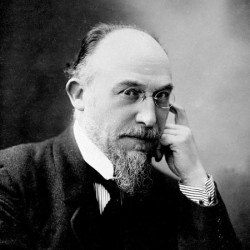 Origin: French
Origin: French
My piano lesson-taking five year old should be able to play this song in a couple of years. Not as patiently, thoughtfully, or expertly as it deserves. But she’ll be able to. And it’ll still sound good.
The reason: Great compositions are more about how notes, chords, and rhythm interact with one other, rather than how fast they are played, by whom they are played, and even on what they are played. Satie’s Gymnopédie No. 1 is a classic example of that.
On closer inspection, it’s as if single keys played on the treble clef are speaking in rhyme to chords played on the bass clef. Like a woman expressing her love to a man.
Frankly, it’s the most poetic song I’ve ever heard that doesn’t have words. Truly breathtaking.
2. Liszt: La Campanella
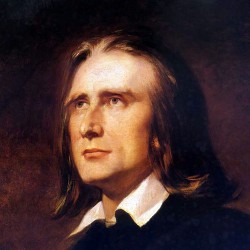 Origin: Hungarian
Origin: Hungarian
Forget everything I just said. Not really, but get ready to be wowed by skill.
Not only is Liszt’s La Campanella built on an unmovable harmonic foundation—like all others on this list—it’s hard to fathom how latter parts are even played.
But that’s not what makes this song so amazing. The insanely fast key strikes and complex variations add to the composition without being showy. They are played with purpose and the song is better because of it.
Plus, the whole thing just sounds otherworldly. Radical even.
1. Debussy: Clair de Lune
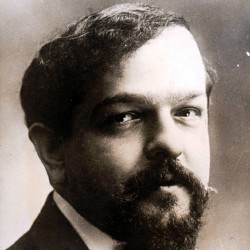 Origin: French
Origin: French
This is it, everyone. The greatest piano sonata ever written.
If Gymnopédie No. 1 is a single conversation between lovers, Clair de Lune and its complex pacing is an entire night on the town, replete with dinner, swelled hearts, awkward moments, an exchange of smiles and laughter, ice cream, a romantic embrace on a park bench, and of course, the exciting conclusion.
Strike that: Clair de Lune is a full and well-lived life abridged to five minutes and played to music. It captures every feeling humanly possible: curiosity, confusion, excitement, bordom, pleasure, pain, triumph, defeat, health, sickness, sadness, joy, expectation, disappointment, wonder, and closure.
More than anything, it’s beautiful. And I hope my life is worthy to call this its soundtrack.—Blake Snow
Like the list? Hate it? Sound off in the comments, and let me know what I may have missed. This story first published to blakesnow.com in summer 2011
10 Comments
NOTICE most of them are German or (Austrian-Germanic) descent. Yay for the Creative German’s. Thanks, interesting Blake. You should play piano more. I think you would catch on easily.
imagine my pleasant surprise when i found u actually have links to the download and not just for streaming. thanks a lot!
I always enjoy the blog posts but this was fantastic, and I was happy to see my two personal favorites coming in at numbers 4 & 5. Thanks
Can’t thank you enough for this list – brought back many good memories of piano lessons as a child, (which sadly were wasted on me) and to be able to save them really was the icing on the cake.
A great list which I’m sure I’ll enjoy listening to over and over.
Absolutely lovely. I have to second Vishakh. What a delight to be able to listen along while I read the blog. Thank you very much.
-Kenneth M. G.
Some of it aren’t even sonataas..
this has got to be the worst list I have ever seen. First of all, most of these aren’t even sonatas. second of all, classical music doesn’t end at 1910, it continues on even today. there are a million things wrong with this list, I could go on for hours.
@alan (aka Beethoven) this has got to be the worst comment I have ever seen. First of all, most of your beefs were addressed by the third paragraph disclaimer. second of all, you’re replying to a year-old post. there are a million things wrong with your comment, I could go on for hours.
Ummmm….. you know, “sonata” is not necessarily a piece with several movements, it can be only one movement called sonata, it’s about the form of the piece. Otherwise I like your top, but learn not to use terms unless you are not sure what they mean though.

Hm. I like the top five, but I’m gonna have to disagree with the first set. Maybe I’ll make my own list! 🙂